New Grants
Grants Awarded for 2024
QUASAR: Quantified Uncertainty Anchors for Same-Day Autonomy and Rapid Transfer through Dense Learning
Defense, Department of-Defense Advanced Research Projects Agency; PI – Henry Liu

The goal of this project is to develop methodologies that enable rapid autonomy transfer. We propose decomposing the autonomy model into two parts: a large base model that remains fixed after pre-training and a small supplement model targeted to resolve domain gaps, which will be fine-tuned during the transferring process. We will use a differentiable world model with LLM-based grounding to model domain-invariant semantic categories with quantifiable uncertainty, enabling a base decision model to navigate across environments. We will explore instances with significant decision errors in sim-to-sim and sim-to-real transfer tests and assess the impact of incorrect semantic categories on action output. We will then apply dense learning techniques developed in our prior work to train a domain gap identification metric and a gap-filling model. During the transferring process, we will only need to identify domain gaps and fine-tune the gap-filling model to enable rapid transfer.
Genetics and Biosynthesis of Novel Forms of Methanobactin
National Science Foundation; PI – Jeremy Semrau
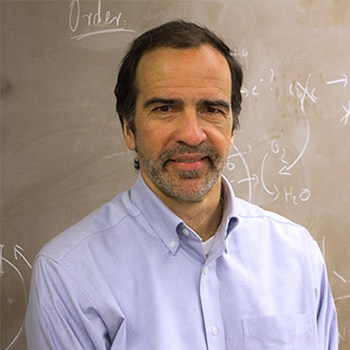
There are three general goals: (1) delineate the entire pathway of methanobactin biosynthesis, it also (2) create modified forms of methanobactin that have enhanced therapeutic value and (3) develop alternative strategies to enhance methanobactin production.
Uncovering the Patterns, Drivers, and Experiences of Population Mobility Due to Low-Attention Flooding
National Science Foundation; PI – Sabine Loos

This project will apply a human-focused mixed methods approach to study population mobility due to low-attention flooding, or events that receive lower widespread attention due to their smaller scale but have the potential to compound pre-existing social vulnerability. Mobile phone, survey, and interview data will be integrated to enable a holistic understanding of population mobility for two case study events in the United States and Japan, two countries with differing underlying vulnerabilities and disaster policy structures. Mobile phone, modeled damage, census, and policy data will provide broad patterns of population mobility that would otherwise be difficult to assess due to the scale of these events. Surveys and interviews will provide depth to the mobile phone data by uncovering experiences and drivers for displaced populations, especially those most vulnerable. This research will not only introduce statistical methods to integrate multiple sources of data but also advance understanding of the mechanisms behind population mobility due to low-attention flooding that are ultimately necessary to inform local planning.
SCC-IRG Track 2: Smart Watersheds for Conservation and Resilience
National Science Foundation; PI – Branko Kerkez
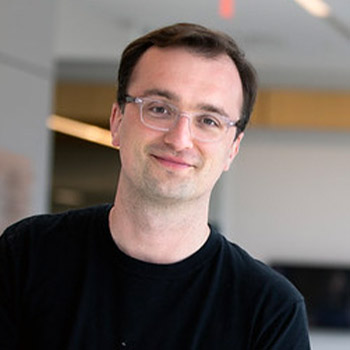
Our goal is to enable the digital watershed – a landscape covered by connected sensors, whose data are analyzed to manage the flow of water. The overarching hypothesis of this proposal is that a web-based decision support tool will restore natural flows and fish habitats by allowing rural and urban dam operators to coordinate flows between each other. This S&CC proposal is a community-led effort, spearheaded by staff at the Huron River Watershed Council. Our community-university team has been collaborating for a decade on solving acute water resource challenges in southeast Michigan. We bring together a team of dam operators, planners, social scientists, ecohydrologists, and engineers.
Generalizing aerosol mixing state: synthesis from observations and connection to models
Department of Energy; PI – Rachel O’Brien
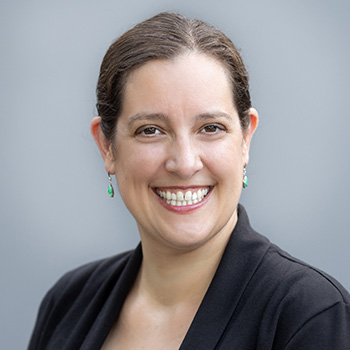
The overarching objective of this work is to develop experimental tools to synthesize a full picture of the aerosol mixing state that can be mapped to aerosol model output. This is motivated by the fact that aerosol particles play important roles in the Earth’s climate by serving as cloud condensation nuclei, ice nuclei, or interacting directly with solar radiation. The likelihood of these processes depends on the chemical composition, the size, and the morphology of the individual particles. However, bulk measurements of components may not fully capture the per-particle composition and thus the corresponding behavior of an aerosol. The aerosol mixing state is a description of the distribution of properties across a particle population. Previous work has characterized aerosol mixing states based on chemical (or elemental) composition with either microspectroscopic or mass spectrometric methods that can measure on a single particle level. Mathematical representations of the extent that a population is internally vs. externally mixed have also been developed. These types of experimental/model comparisons help constrain representations of aerosol populations across different model scales from particle-resolved models to modal or bulk models. However, there is no individual instrument that can determine the complete aerosol mixing state and substantial effort is needed to synthesize a complete picture. In addition, aerosol physico-chemical properties like morphology, surface tension, and viscosity will influence aerosol behavior, but we have gaps in both the models and single particle measurements for these properties. Thus, continued work is needed to improve our ability to predict the role aerosols will play in our climate. Dr. O’Brien’s responsibilities on this project include sample collection as well as the offline detailed chemical characterization of the samples collected at the AMF3 field site. This will include measurements with Orbitrap MS, UV/Vis, and offline-AMS. Dr. O’Brien will supervise a graduate student, and she will write and contribute to the publications and present the material at conferences to disseminate the research.
Integrating Nature Based Solutions into a Comprehensive Stormwater Strategy for SE Michigan.
National Fish and Wildlife Foundation; PI – Glen Daigger
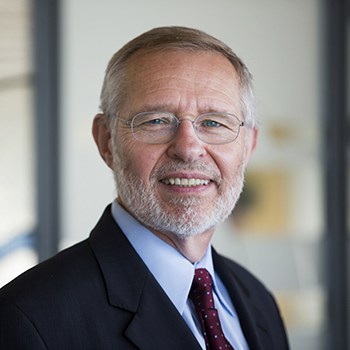
The goal of this task is to integrate the insights of community leaders about the impacts of changing precipitation patterns on (a) built infrastructure and socio-economic community resilience, and (b) water quality and biodiversity of our Great Lakes Coastal Watersheds. This task advances climate action by establishing a framework for the development of community-led nature-based solutions that will help increase capacity in distressed regional wastewater treatment systems, improve water quality, recover disturbed aquatic ecosystems, and protect regional biodiversity. To operate at scale in heavily urbanized and politically fragmented regions, a platform for broader collaboration and collective visioning at local and regional levels will be established via these methods: (1) recruit key “big-picture” community thinkers with deep knowledge of the operations and functional relationships between engineered and socio-ecological systems that influence climate resilience in urban areas, represented in the attached letters of support; (2) using coastal Southeast Michigan as a testbed for analysis and modeling that also has broad applicability to other Great Lakes coastal metropolitan areas, engage in two-way strategy sessions between these community leaders and the analysis team leaders for Tasks 2-5 that will guide the described in-depth regional planning innovations; (3) engage the broader stakeholder community through established forums and collaborative networks for input that will result in a practical regional plan with transferability and impacts beyond Southeast Michigan. Deliverables: (A) A regional plan for meaningful stakeholder engagement that addresses barriers and opportunities for innovation and collaboration; (B) A network of leaders within the stakeholder community who are engaged, empowered, and positioned through this process to make transformative changes to the regional system; (C) A framework for translation of the regional plan for stakeholder engagement throughout this metropolitan area, and for transferability to others around the Great Lakes.
NSF Convergence Accelerator Track K: Advancing equitable and circular water systems through source separation
National Science Foundation; PI – Nancy Love

Water in modern society is inherently complex; its management, use, value, and accessibility are all defined through a complex “system-of-systems” web of technology, regulations, policy, economics, public health, social history, and human perceptions. Furthermore, every type of water in water systems (e.g., source and receiving waters, treated drinking water, the various forms of water containing waste materials from human use, stormwater, groundwater, irrigation water, industrial water) is connected to and impacts multiple other types of water the flows through our communities. This proposal is grounded in the premise of One Water. Among the many features of this approach is the acknowledgement that waste management is the first step in effective water treatment for both potable and non-potable uses. Our vision for this proposal is to normalize source separation as a strategy to create sustainable, resilient, and equitable water systems.
DISES: Governing Green Stormwater Infrastructure for Just and Adaptive Urban Flood Management
RAND Corporation; PI – Branko Kerkez

The scope of work for our research encompasses several key objectives that are aimed at addressing issues related to stormwater management and flooding.
Collaborative Research: Merging Human Creativity with Computational Intelligence for the Design of Next Generation Responsive Architecture
National Science Foundation; PI – Evgueni Filipov

The core hypothesis of the proposed work is that human creativity can both lead and be led by computational intelligence in the form of machine learning to develop designs of engineered systems that are measurably superior both artistically and functionally. It is further hypothesized that the emerging fields of origami-inspired adaptive structures and responsive architecture can distinctly benefit from combining human and computational intelligence due to the unique challenges in developing sufficient computational representations and the complex and competing design objectives required. This work intends to establish a new strategy to integrate architectural design processes and human-derived designs with physics-guided machine learning and computational design optimization, and to evaluate this strategy on the application of origami-inspired responsive architecture. To accomplish these goals, the proposed technical approach will involve an integrated computational experimental research effort with three thrusts: 1) Establish a coupled human-computer design strategy for component-level origami-inspired adaptive structures to simultaneously meet multiple external environmental interaction goals and intrinsic structural requirements; 2) Create a computational framework to evaluate the performance of origami-inspired adaptive structures, and augment their design based on human input and computer guidance; and 3) Establish a framework for the introduction of new structural concepts in an architectural design process and application of this framework to identify emergent origami-inspired concepts for adaptive structures.
CLIMA: Nimble, Adaptive, and Reusable Structures (NARS): Systems, Mechanics, and Financing
National Science Foundation; PI – Evgueni Filipov

The objective of this project is to establish a comprehensive framework for system integration, structural mechanics, and financing for nimble, adaptive, and reusable structures (NARS). The overarching idea behind NARS is to harness emerging concepts in origami-inspired deployable and reconfigurable structures for strategic, widespread and commercially viable applications in building infrastructure. The systems can be potentially transformative for climate change mitigation and adaptation offering distributed fabrication, nimble and rapid assembly for post-disaster recovery, geometrically adaptable modules, and reusable building assets.
National Priorities: Research on Disinfectants, Disinfections by-products(DBPs), and opportunistic pathogens in drinking distribution systems
The University of Texas at Austin; PI – Lutgarde Raskin
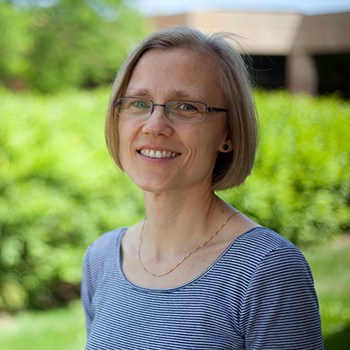
We will design, implement and evaluate a small set of digital Co-DOWN Cases on the open access learngala.com site. To design the modules we expand on a pilot program in partnership between UM and the Midwest Big Data Innovation Hub, to support students from MSIs in software and instructional design of accessible, interactive data learning tools for such modules. This will build bridges between the Watertower team and the Midwest and Southern Big Data Innovation Hubs (see letter of support from John MacMullen). To implement them we draw on a further pilot supported by the Public Interest Technology University Network provides models to incorporate close partnership between the university and local utilities for research and training about flushing and other utility monitoring and maintenance practices. To evaluate them we would partner with the Watertower and its existing matrix of training and continuing education partners to identify learning objectives on the front end of module design, and test for attainment after use via surveys, self-assessments, interviews, and/or focus groups. These approaches are complementary to The Water Tower’s existing strengths in hosting, facilitating, and designing water sector training activities and materials in these arenas. We thus offer concrete, incremental steps for more inclusive approaches to active learning that creates workforce-facing and community-based complex system management materials and extensive local and regional partnership opportunities. Our deliverables will be dynamic and connected to specific system parameters and decisions. As importantly, our collaborative module creation and review process will connect researchers, students, and professionals in an apprenticeship model, with options to adapt and update deliverables that will increase data literacy and tech skills for water protection.
Development of WRRF Influent and Plant-Wide Simulation Tool
Great Lakes Water Authority (GLWA); PI – Glen Daigger

The Great Lakes Water Authority (GLWA) Water Resource Recovery Facility (WRRF) provides primary and secondary treatment, chemical and biological phosphorus removal, and disinfection of municipal, industrial, and combined sewer flows using conventional primary treatment, with ferric chloride addition followed by high purity oxygen (HPO) activated sludge process. Primary and secondary sludge is thickened in separate gravity thickener complexes, combined, and either processed into pellets by centrifuge dewatering and thermal drying or dewatered and incinerated. University of Michigan (U-M) researchers have been assisting GLWA with analysis of the functional treatment mechanisms and performance of the WRRF since 2017, including investigations of chemical and biological phosphorus removal, the fate of phosphorus through the WRRF, opportunities for phosphorus recovery, and development of a whole plant model in SUMO. GLWA wishes to continue to receive assistance from U-M researchers and to provide research opportunities for U-M students. The purpose of this project is to provide the basis for continuing this collaboration and to conduct research, as agreed to by GLWA, to further assist with understanding and optimizing the performance of the WRRF.
Deposited smoke in urban areas; surface grime and emissions of volatile products
NOAA; PI – Rachel O’Brien

This project will look at the impact of wildland fires on the air quality in urban areas. We will carry out a laboratory study that probes the aging of biomass-burning organic aerosol particles (BBOA) and we will explore the products formed in the condensed phase as well as look at the volatile fraction. This project is looking at aerosol particles as well as BBOA materials deposited on surfaces indoors and outdoors. The majority of the work will take place at the University of Michigan with some travel to Aerodyne for experimental measurements. We will also be collaborating with a team at UC Davis that will be sending us surface samples to look at deposited real-world smoke samples. The major deliverables will include multiple papers and a portion of a Ph.D. thesis. This project will involve a graduate student from UM as well as undergraduate student researchers to assist with preparation, aging, and some data analysis.
Project M (SEWRB-UM): ELC SEWER Network Project-Wigginton/Eisenberg
State of Michigan, Health and Human Services Department ; PI – Krista Wigginton
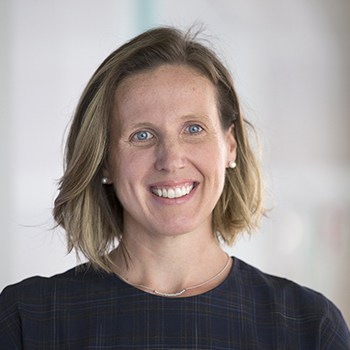
This project provides the State of Michigan with data on wastewater SARS-CoV-2 levels in wastewater treatment plants. Samples will be collected regularly and SARS-CoV-2 genes will be quantified with digital droplet PCR.
Grants Awarded for 2023
Assistance Optimizing the Great Lakes Water Authority (GLWA) Water Resource Recovery Facility
Great Lakes Water Authority (GLWA); PI- Glen Daigger

The Great Lakes Water Authority (GLWA) Water Resource Recovery Facility (WRRF) provides primary and secondary treatment, chemical and biological phosphorus removal, and disinfection of municipal, industrial, and combined sewer flows using conventional primary treatment, with ferric chloride addition followed by high purity oxygen (HPO) activated sludge process. Primary and secondary sludge is thickened in separate gravity thickener complexes, combined, and either processed into pellets by centrifuge dewatering and thermal drying or dewatered and incinerated. University of Michigan (U-M) researchers have been assisting GLWA with analysis of the functional treatment mechanisms and performance of the WRRF since 2017, including investigations of chemical and biological phosphorus removal, the fate of phosphorus through the WRRF, opportunities for phosphorus recovery, and development of a whole plant model in SUMO. GLWA wishes to continue to receive assistance from U-M researchers and to provide research opportunities for U-M students. The purpose of this project is to provide the basis for continuing this collaboration and to conduct research, as agreed to by GLWA, to further assist with understanding and optimizing the performance of the WRRF.
Transforming Equilibrium Analysis Paradigm for Modeling Transportation Networks with Intelligent Traveling Agents
National Science Foundation; PI- Yafeng Yin

Transportation network equilibrium modeling paradigm plays an important role in planning and operations of transportation networks. The paradigm has been established via a “bottom-up” approach over the past 66 years. The proposed research aims to transform this “bottom-up approach” by developing an end-to-end learning and optimization framework. Our research is also motivated by observing that, assisted by advanced decision-support technologies, future traveling agents (connected drivers or automated vehicles) will possess strong learning and computation capability, and their travel decisions can be algorithmic, strategic and adaptive. The presence of these intelligent agents cast doubt on whether the equilibrium modeling paradigm is adequate for planning future urban transportation networks, and whether the notion of equilibrium remains relevant for capturing the interactions of intelligent traveling agents. The proposed research consists of two thrusts. The first thrust focuses on developing dynamical systems by explicitly modeling day-to-day travel choices of intelligent traveling agents and examining the convergence and stability properties of the dynamical systems. By demonstrating Wardropian user equilibrium can still emerge in the day-to-day evolution of network traffic dynamics with intelligent traveling agents, we hope to provide certain justification for the premise of equilibrium or establish some behavioral basis for the equilibrium modeling paradigm. The second thrust aims to integrate implicit deep learning with network equilibrium analysis to develop an end-to-end framework that directly learns the behaviors of traveling agent, the equilibrium state, and other modeling components, if needed, from empirical data. This end-to-end framework can not only support a much richer representation of travel behaviors but also describe the outcome of strategic interactions among intelligent traveling agents. Once trained, it can be used to conduct “what-if” analyses. In addition, the same modeling framework can be further tweaked to prescribes optimal plans for improving the network performance.
Performance-Based Financing Models for Sustainable Water Management in the Great Lakes Basin
Foundation For Food and Agriculture Research; PI- Peter Adriaens
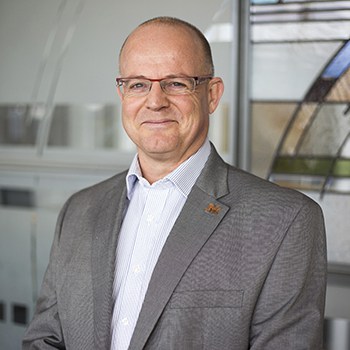
This implementation project focuses on an innovative financial markets approach to address soil health, nutrient leakage and water quality issues in the Great Lakes Basin. While conventional farming operations are often singled out as the direct cause of fertilizer runoff, the role of the capital markets using green farming financing to influence sustainable farming practices has received little attention until recently. There is an increasing demand in the farm credit and lending market for sustainability-linked financial products, to catalyze the change from traditional to sustainable on-farm practices resulting in improvements in soil health from measurement to adoption. This implementation project focuses on demonstrating the leveraging power of the capital markets to affect behavioral change in corporate supply chains and their agricultural partners (producers) on a use case in the Saginaw Bay area. The premise underlying this theory of change is that environmental externalities from agricultural pollution are not priced in the market because of market and definitional frictions that could capture this sustainability risk in (i) financial transactions; (ii) land and commodity valuation; and (iii) a risk and return framework. The key implementation objective of the project is to demonstrate the feasibility of new financing (lending) instruments to accelerate sustainable land stewardship and mitigate impacts from fertilizers in the Great Lakes ecosystem.
Feasibility of single-stage softening during water treatment: a pilot scale assessment
City of Ann Arbor; PI- Aleksandra Szczuka
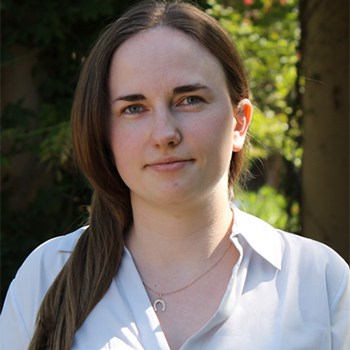
The pilot study is conducted to address the following treatment needs:
1. Hardness removal with single-stage softening using lime and sodium hydroxide (or soda ash).
2. Organic carbon removal with single-stage softening including potential coagulants and their impact on the settleability and filterability of the organics.
3. Sustainability of filter operations to meet water quality objectives with single-stage softening.
4. 1,4-dioxane removal.
5. Evaluation of disinfection byproduct (DBP) formation (at pilot scale) and formation potential (at lab scale) during treatment
6. Evaluation of the behavior of per- and poly- fluoroalkyl substances (PFAS) during treatment
7. Evaluation of the behavior of optional additional contaminants. These contaminants would be assessed if time and budget allow, and are not included within this scope of work.
Personalizing stormwater investments using digital tools
Fred A. & Barbara M. Erb Family Foundation; PI- Branko Kerkez
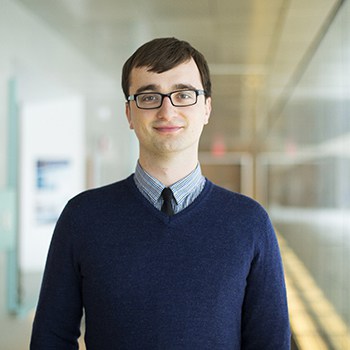
Project Goals: 1. Democratize access to the latest generation of digital tools, which will allow residents, community groups, and municipal managers to personalize stormwater solutions and maximize the likelihood of positive outcomes. We envision an easy-to-use web app, accessible to anyone in the region. 2. Empower residents to easily answer questions such as “if I place a rain garden on my property, how will flooding in my neighborhood change?” Community groups will be able to evaluate scenarios, such as “how will water quality in the Detroit River improve if our neighborhood switched to permeable pavement?” 3. Support Municipal managers to quickly optimize and compare green and gray solutions across large scales through recommendations made by the latest generation of Artificial Intelligence and Data Analytics.
“FISH’N’CHIPS”: Forecasting and Identifying Supply-and-demand Hindrances aNd Correlated Hazards In Procurement Systems
Stealth Software Technologies, Inc.; PI- Peter Adriaens

Stealth Software Technologies, Inc. (Stealth) proposes a new supply chain management system for DARPA RSDN TA2. At a high level, our proposed effort involves three components. The first component is (a) applying cutting-edge graph, network, and learning algorithms to SDN data using cutting edge ideas from graph clustering, streaming and multicommodity flow algorithms from theoretical computer science. Next, we have a novel approach to (b) data and function connectors with APIs that are expressive and flexible. These can interface with TA1 systems in a robust way that will produce novel graph analyses and utilize secure multiparty computation and/or differential privacy, and can also be connected to TA3 solutions that heavily rely on automated stress testing. The final component is (c) a revolutionary visualization engine tied into the APIs, enabling easy-to-understand, reactive depictions of the complex underlying analysis. We further elaborate on these tasks in the Technical Plan section.
Regional Coordination to Optimize Wastewater and Stormwater System Operations
Fred A. & Barbara M. Erb Family Foundation; PI- Glen Daigger

The primary goals of the project are to identify barriers to regional stormwater cooperation and then to work towards solutions to these barriers so that the region can better manage the impacts of larger storm events and variability of precipitation driven primarily by climate change. The benefit for the region could be hundreds of millions of dollars in capital savings. This project will focus on the GLWA wastewater service area in SE Michigan which includes portions of Wayne, Oakland and Macomb counties. There are a number of technologies and concepts that currently exist to more effectively manage stormwater flows from a regional perspective. In addition, new approaches can be developed based on new operating parameters which could benefit the region significantly. These approaches have the potential to save hundreds of millions of dollars of capital investment and operations costs.
BRITE Relaunch: A Physics-Based Simulation Model for Exploring Community Resilience to Wildfires
National Science Foundation.; PI- Ann Jeffers
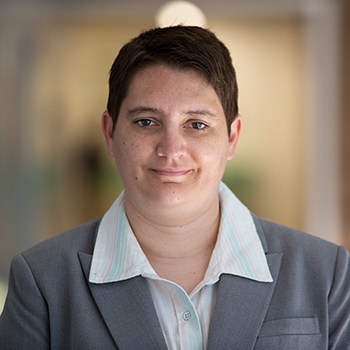
Wildfires pose a substantial threat to civilians living at the wildland-urban interface (WUI). The damage to most structures is caused by ignition from firebrands, which are fragments of flaming and smoldering materials that are carried by the wind and may impinge on structures. While a single firebrand is enough to ignite a home, a greater danger is faced when accumulations of firebrands gather at certain locations on the structure (e.g., in corners, cracks, and crevices). At present, the only way to study how firebrands accumulate around structures is to perform an experimental test. However, such tests are expensive and do not necessarily scale to full-sized structures. Furthermore, the lack of a model for firebrand transport and ignition prohibits advances that seek to understand how policy and data science can inform decision-making for communities at the WUI. This work proposes the formulation and validation of a physics-based simulation model for firebrand transport around structures. The simulation will use computational fluid dynamics (CFD) to simulate the flow of air around a structure due to wind using a multiphase Eulerian approach, and firebrands coming in contact with the structure will be modeled using the Discrete Element Method (DEM). Due to the high level of uncertainty, a stochastic model is proposed that takes into account the variability in firebrand properties, which have been measured from experiments and are published in the literature. Once validated, the simulation model will be used to study how policy decisions affect community resiliency to wildfires.
Grants Awarded for 2022
Impact of UV treatment on microbial communities in a full-scale drinking water distribution system
City of Ann Arbor; PI- Lutgarde Raskin

The proposed research will investigate the effect of UV treatment within a full-scale water treatment plant (AA-WTP) on microbial communities in the distribution system, with a focus on opportunistic pathogens and nitrifying bacteria. Experiments will be conducted to characterize microbial communities within A) a full-scale water treatment plant and distribution system 1) while the UV system is off/operated only intermittently and 2) during a one-year period of continuous operation. Samples will be collected before and after theUV system to characterize the impact of UV on the overall microbial community and target populations. Additionally, sampling will be conducted in the distribution system to determine how continuous UV treatment changes distribution system water quality. The results of this research will provide guidance to the utility regarding the potential benefits and costs of continuous operation of the UV disinfection system, including how the system may influence microbial communities, microorganisms of concern, and general water quality.
Leveraging Vehicle Telemetry Data to Reduce Congestion in Urban Traffic Networks
General Motors Company; PI- Yafeng Yin

Utilizing GM’s high speed vehicle telemetry (HSVT) data, the University of Michigan (UM) team, in collaboration with General Motors LLC Global R&D, aims to develop novel computational techniques that prescribe strategies to better manage and operate existing traffic networks to reduce traffic congestion. This project contributes to GM’s efforts of achieving the “zero congestion” for future transportation. It leverages recent advancements in machine learning to develop an end-to-end modeling framework that would transform the way how metropolitan planning organizations model, plan and manage their traffic networks.
Multidisciplinary Investigation of Transmission to Ease influenza (MITIGATE FLU)
National Philanthropic Trust; PI- Krista Wigginton

The overall goals of this project are to innovate influenza virus detection and quantification and to probe mechanisms of virus inactivation in air and on surfaces. These goals will be achieved by systematically and simultaneously optimizing both sampling and detection. The final products of this effort will be accurate and rapid platforms for influenza virus detection within indoor air and on fomites, as well as mechanistic descriptions of influenza virus fate in the indoor environment. Our cross-disciplinary team of experts in environmental virus surveillance, influenza virology, protein mass spectrometry, pathogen sensors, and aerosol science is uniquely positioned to address this persistent issue.
Collaborative Research: NNA Research: Interactions of natural and social systemAnalysis and Characterizing Sludging in Flat Sheet Membranes
Fibracast; PI- Glen Daigger

The objectives of the research to be conducted in accordance with the scope of work are as follows:
1.To characterize the fluid flow characteristics of Fibracast commercial membrane cassettes tobetter understand how to optimize membrane system performance.
2.To verify computational fluid dynamic (CFD) model experimentally.
3.To investigate and verify potential improvements to commercial membrane cassette.
4.To investigate potential additional applications for Fibracast membrane products.
This project emphasizes two types of stressors: (a) changes in summer and winter heating regimes that have led to growth of tall vegetation in the tundra, and an increased frequency of winter warm spells that change snowpack structure and seasonality and (b) growing presence of industrial activities/infrastructure as well as increasing social complexity of reindeer herding economy. Building on state-of-the-science understandings of impact paths of these stressors, we propose a set of hypotheses to be tested via a transdisciplinary approach, and synthesis of traditional and scientific knowledge. The project addresses all six focus areas of the NNA solicitation. Based on Track 2 team development activities, our group (22 scientists) has developed a comprehensive management and integration plan for effective coordination and integration of disciplinary research tracks.
FW-HTF-R: Collaborative Research: Partnering Workers with Interactive Robot Assistants to Usher Transformation in Future Construction Work
National Science Foundation; PI- Seymour Spence
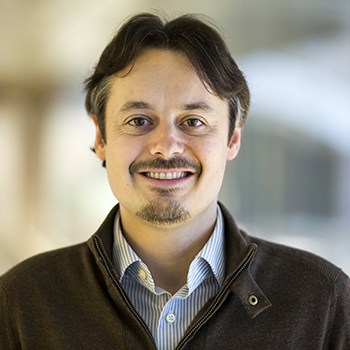
Extreme windstorms cause massive economic loss and societal disruption each year. According to the National Oceanic and Atmospheric Administration, in 2020 the United States was subject to 22 weather events that caused more than one billion dollars of losses, with Hurricane Laura the costliest causing 19 billion dollars of losses and leaving more than a million people without power. To increase the resilience of the built environment against extreme winds there is huge interest from the civil engineering
community to radically change how buildings, a key part of the built environment, are designed to resist extreme winds through the application of methodologies based on the concepts of performance-based engineering. This new paradigm, referred to as performance-based wind design (PBWD), centers on the explicit evaluation of performance at all hazard intensities, including at ultimate load levels where significant damage is expected, while systematically treating uncertainty through reliability. This industry-led drive for PBWD has resulted in the recent publication of a first-of-its-kind Pre-standard on PBWD by the American Society of Civil Engineers and created a fundamental need for technologies that can assist practicing engineers in carrying out PBWD of structural systems through advanced reliability-based analysis procedures. The technology of this project fills this critical gap through providing an initial software tool for reliability-based PBWD that leverages the basic research breakthroughs in probabilistic dynamic shakedown of wind excited structural systems that were spawned by the NSF lineage award: CMMI-1462084: Collaborative Research: Performance-Based Framework for Wind-Excited Multi-Story Buildings. The target market for the technology are the thousands of civil and structural engineers tasked with designing structural systems that possess greater resilience to extreme wind events, while meeting the stakeholder’s need for cost effectiveness. It is estimated that there are over 300,000 civil engineers in the United States, with over 50,000 specifically working in the space of structural engineering and therefore the design of systems to resist the actions of natural hazards.
MS2 enumeration in samples
MagPlasma, Inc.; PI- Alexsandra Szczuka

The purpose of these trials is to inform system optimization and to determine disinfection e
Integrated biochemical and electrochemical technologies (IBET) to convert organic wastes to biopower via North American research and educational partnerships
Department of Energy; PI- Lutgarde Raskin

We propose to develop an integrated biochemical and electrochemical technologies (IBET) system to convert mixed urban and suburban organic waste streams to pipeline-ready biomethane. The IBET system consists of three synergistic components. A first-stage anaerobic dynamic membrane bioreactor (AnDMBR), modeled after the stomach of ruminants, will be used to enhance hydrolysis and achieve rapid short chain carboxylic acids (SCCAs) generation (expected organic loading rate is 24 g volatile solids (VS)/L reactor/day at a 12-h hydraulic retention time (HRT)). A second novel AnDMBR with enhanced biofilm surface area and recirculation (MagnaTree bioreactor) will convert the SCCAs produced in the first-stage AnDMBR to biogas with an expected yield of 0.4 L CH4/g VSfed at a 5-day HRT. In the final stage, an electrochemical separation system, called the Electrochemical Reactor for CO2 and H2 Delivery (ERCHD), electrolyzes water into H2 and captures biogas CO2 as aqueous HCO3-. The produced H2 and captured HCO3- serve as substrates for a second MagnaTree bioreactor focused on hydrogenotrophic methanogenesis, which produces an extra ~38% of high-purity (98%) CH4. The project aims to evaluate the performance of this IBET system at the pilot-scale level at the Great Lakes Water Authority water resource recovery facility (WRRF), perform a techno-economic analysis and a life-cycle assessment, and develop industry recommendation. We anticipate greater than 25% more biomethane production and 25% less operating cost compared to the State of Technology. We propose to integrate our research with innovative educational efforts to advance both waste-to-energy (W2E) technology and next-generation workforce development. We will create an educational consortium to connect the leading institutions and collaborating partners. Collaborations among five North American universities will expand our research potential and promote an understanding of the North American W2E context. Involving a WRRF, three engineering companies, and a national lab partner will be especially effective taking into account real-world complexities from the start. These partnerships also allow the sharing of educational resources and create meaningful training opportunities for diverse students at different levels. The consortium will achieve its goals through three major activities: Ph.D. student research rotations, co-op-based master student training, and research experiences for undergraduates. We will recruit students from partner and collaborating universities and community colleges. Diverse students will be recruited through our existing networks with Minority Serving Institutions.
Collaborative Research: Cascade “Ecohydronomics” in the Amazonian Headwater System
National Science Foundation; PI- Valeriy Ivanov
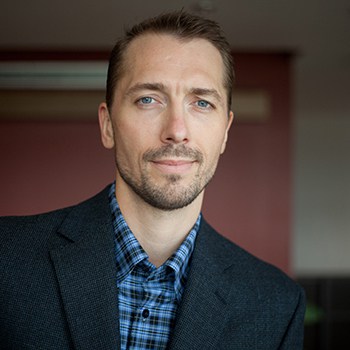
Tropical forests yield a third of global evapotranspiration from land surface. Nearly half of the water that falls on the Amazon rainforest, the world’s largest contiguous tropical forest, passes through stem xylem and leaf stomata on its way back to the atmosphere. There has been progress in quantifying large-scale water fluxes in Amazonia, however, ecophysiological and soil-water processes controlling landscape variability in transpiration, and the unilateral, cascading impact of forests residing in groundwater recharge (GW-R) areas on hydrology and tree function in discharge (GW-D) zones remains poorly understood. We hypothesize that (H1) there is a strong landscape variation in forest
transpiration capacity due to distinct ecophysiological traits of trees residing in GW-R and GW-D regions; (H2) previously unquantified “hybrid” hydraulic behavior of tropical soils governs flux quantity and the transit time scales of soil water transport connecting GW-R and GW-D areas; and (H3) the composition and ecophysiology of forests in topographic highs control the one-way cascade GW-R→GW-D connection and shape its sensitivity to climate variations, determining the distribution of ecophysiological traits and
transpiration in topographic lows. The specific objectives are (O1) to estimate forest transpiration capacities in GW-R and GW-D areas based on physiological trait measurements and mechanistic modeling for two locations in the Amazon of distinct climate seasonality; (O2) to inversely estimate properties of the hybrid soil hydraulic system based on deep soil water observations using novel tools in
probabilistic learning and models of soil hydraulics; (O3) to infer effective soil hydraulic properties governing GW-R→GW-D connection in a case study tropical watershed in central Amazonia; (O4) Integrate ecophysiological and hydrological models to estimate the spatial distributions of GW-R→GW-D water transit times; and (O5) to quantify watershed-scale GW-RGW-D flux sensitivities to climatic perturbations at seasonal and interannual scales, including long-term change of vegetation traits.
Next-generation performance-based wind engineering: knowledge and computational modeling advances for collapse characterization
National Science Foundation; PI- Seymour M.J. Spence

Each year extreme windstorms cause massive economic and societal loss around the world. Estimates put the losses to the United States to hurricanes alone, over the past five years, to be in excess of $300 billion. This has led to intense interest from both wind engineering researchers and practitioners to transition from traditional prescriptive approaches in favor of performance-based engineering (PBE) methodologies. A direct consequence of these efforts has been the development of state-of-the-art frameworks and guidelines for the application of what has become known as performance-based wind engineering (PBWE). Despite these efforts, a fundamental lack of knowledge still exists on the behavior at collapse of integrated structural and envelope systems of typical wind excited buildings that adhere to current codes and standards. This lack of knowledge is coupled with an absence of efficient and practical computational modeling approaches that are capable of not only assessing such an integrated collapse scenario, but also accounting for the inevitable uncertainty that exists in estimating collapse. These essential gaps in knowledge and modeling severely limit the benefits of current PBWE methodologies. The main goal of this project is to provide the necessary advances in knowledge and modeling to overcome these fundamental hurdles. This will be achieved through the creation of a comprehensive knowledge base concerning the probability of collapse of typical structural systems subject to extreme winds and how this correlates to the performance of typical building envelope solutions. This knowledge base will enable the introduction of a new generation of probabilistic computational modeling frameworks for the rapid and integrated structural and envelope collapse assessment. These advances will arm engineers with the necessary tools for reaping the maximum benefits offered by PBWE during the integrated design of building systems against extreme winds. This will lead to transformative innovation in design, while providing the fundamental knowledge advances necessary for the development of next generation PBWE guidelines and standards.
Collaborative Research: NNA Research: Interactions of natural and social systems with climate change, globalization, and infrastructure development in Yamal (Russian Arctic)
National Science Foundation; PI- Valeriy Ivanov

The Arctic warming has triggered seasonality shifts, permafrost warming, and the occurrence of extreme weather conditions. Terrestrial ecosystems have already responded with phenology changes, lower-latitude plants moving into the tundra, and cascading northward displacement of mammalian and bird populations. These changes have put increased pressure on livelihoods of peoples of the North, who depend on flora and fauna tied inextricably to weather and seasonality. The Arctic is also being impacted by globalization: the emergence of industrial and urban “hot spots” and centers of hydrocarbon extraction, the development of tourism, and the growing influ-ence of “newcomers” are impacting the tundra and livelihoods of indigenous peoples as
never before. Multi-system responses of Arctic systems to both climate change and globalization is urgently needed.
Following our Track 2 project team integration and synthesis activities, we propose to study natural, social, and built environment systems of the Yamal region of Russia – a tightly bound, circum-scribed “microcosm” of the Arctic. The region spans four of the five Arctic bioclimatic subzones; it bears signatures of the tightly woven processes linking climate, weather, landscapes with permafrost, plants, animals and the increasingly interacting worlds of the Nenets (the indigenous pastoralists subsistent on reindeer) and global economy bringing to the region reindeer product businesses and the hydrocarbon industry. Understanding how these abiotic, biotic, social, and built environment systems are linked in their responses to stressors of the “new Arctic” is our primary objective.
This project emphasizes two types of stressors: (a) changes in summer and winter heating regimes that have led to growth of tall vegetation in the tundra, and an increased frequency of winter warm spells that change snowpack structure and seasonality and (b) growing presence of industrial activities/infrastructure as well as increasing social complexity of reindeer herding economy. Building on state-of-the-science understandings of impact paths of these stressors, we propose a set of hypotheses to be tested via a transdisciplinary approach, and synthesis of traditional and scientific knowledge. The project addresses all six focus areas of the NNA solicitation. Based on Track 2 team development activities, our group (22 scientists) has developed a comprehensive management and integration plan for effective coordination and integration of
disciplinary research tracks.
FW-HTF-R: Collaborative Research: Partnering Workers with Interactive Robot Assistants to Usher Transformation in Future Construction Work
National Science Foundation; PI- Carol Menassa

The construction industry is ill-famed for its stagnant productivity, use of antiquated work processes, adversarial relationships among stakeholders, and safety and health issues among construction workers. Over time, this has led to a chronic shortage of skilled workers, largely due to an aging and retiring workforce and the reluctance of younger generations or people of different abilities to pursue such careers. This FW-HTF project envisions that intelligent human-robot teams have the potential to transform future construction work and the profile of future construction workers resulting in new career
opportunities and significant benefits to the industry. In this research, human workers will use interactive task learning technology to teach co-robots to perform construction work tasks resulting in symbiotic human-robot teams that can be widely deployed in the construction industry. The future human construction worker will be responsible for high-level work planning and will transition to the role of teacher and supervisor of the co-robot. The co-robot, on the other hand, will perform physically strenuous work tasks and collaborate with the human supervisor to improvise when unforeseen work conditions are
encountered. This envisioned approach parallels the classical Master-Apprentice vocational model prevalent in today’s construction industry, wherein novice human workers develop skills by completing apprenticeships under the tutelage of skilled workers and accumulating experience in diverse work conditions. This transition will be achieved through innovation in the construction vocational curriculum, where, in addition to learning fundamentals of construction work, human workers will learn and use new interaction, visualization and trust-development methods to collaborate with co-robots. These new skills will enable workers to advance their work roles, encourage upward mobility, and open avenues for people of diverse physical abilities to be productive members of the construction workforce, a prospect that is impossible today. This will result in improved productivity and reduced costs associated with re-work and safety in construction work. A tight knit partnership with industry collaborators will inform the research activities and provide access to interactions with a broad range of construction workers.
AI-Based EHS Management
VelocityEHS; PI- SangHyun Lee
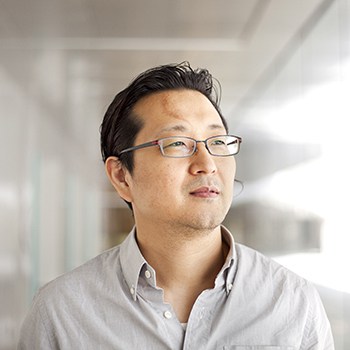
Recent advancements in Artificial Intelligence (AI) techniques have enabled Environment,
Health, and Safety (EHS) practices to be smarter and more automated. We aim to define the next generation of EHS management by fully utilizing the potential of AI through a 5-year project with multiple objectives (described below) that can be directly translated into todays’ EHS practices. This project requires significant field trips to collect the data and validate our
developed techniques.